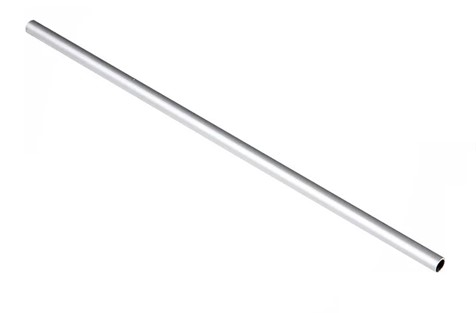Agrarian Goldman against pigs: beef bets may not work

“When we built our innovative pig farm in 2014, it was a promising and marginal direction for business: the beginning of import substitution, there is not enough domestic production in the country, there was practically no competition, the price of products was good. But in the future, other producers in the country continued to build and put into operation new pig farms. As a result, this led to overproduction, ”Goldman lamented.
Without thinking twice, the farmer decided to switch to the production of beef and MILK. According to his thoughts, the bet on these areas should justify itself and bring his agro-industrial holding into the bright horizons of prosperity.
Pig farming, says Goldman, has become a low-margin enterprise. But is it?
Let's put aside the details of how Roman Gennadievich managed to lead his enterprise into a financial and production dead end - the point here, of course, is not overproduction in the market, which he blames. Let's turn to the situation and the sales market - after all, according to Goldman himself, any project should begin with sales. Can not argue.
And the situation is such that the Russian population reduces the consumption of beef from year to year. In March, the National Rating Agency also cites such data: over the past five years, Russians have reduced beef consumption by one kilogram - from ten kilograms per capita to nine kilograms per year.
The trend promises to continue in 2023 and 2024. Among the main factors in the decline in consumption is the notorious drop in the level of incomes of the population. Actually, beef has always been MEAT for the more affluent segments of the population, and the economic hardships of recent years have made it even more niche and delicacy food.
Pigs no longer feed Roman Goldman's wallet
On the other hand, the decline in beef consumption also reflects a global trend: the consumption of broiler is growing in the world as the cheapest protein. Ten years ago, in the world, the share of beef in the meat plate was 24%, but now this figure has dropped to 18%.
Conversely, pork consumption is on the rise along with poultry consumption. The consumer is guided by a simple principle: why pay more? Given current prices, a kilogram of meat can cost less than a kilogram of cucumbers. Between meat and cucumbers in terms of saturation, the choice is obvious. The structure of consumption today is as follows: first comes poultry (45% of the share of consumption), followed by pork (38%) and beef closes the top three (17% of the total amount of meat eaten).
At the same time, the cost of beef production is growing. In this regard, the natural and climatic conditions of Siberia, where a long winter and off-season create a shortage of grass and hay, dictate especially harsh rules for those who breed cattle.
Next: the rate of turnover of capital. If the cultivation of meat bulls requires 18 months, then a domestic pig can reach a marketable weight of 100-110 kilograms by the age of seven months. The pickyness of pigs in terms of keeping and feeding conditions also speaks in favor of pig breeding.
So, whatever one may say, from the point of view of arranging economic and production processes, pig breeding remains the most marginal livestock sector. Farmers and agro-industrialists involved in raising cattle for meat are in a frankly non-competitive position with pig and poultry complexes.
... No matter how Roman Gennadievich led his agricultural holding into new strategic dead ends. To manage to get burned out on high-margin pig farming requires some special managerial talent.
Read together with it:
- Парагвай: Экспорт субпродуктов является растущей отраслью и уже достиг 95,4 млн долларов СШАЭкспорт говяжьих субпродуктов в этом году значительно вырос. К концу августа выручка составила 95,4 млн долларов США по сравнению с 54,6 млн долларов США на тот же конец прошлого года. По данным SENACSA, в конце августа этого года было экспортировано 51 миллион килограммов мяса по сравнению с 33,7 миллиона килограммов на конец того же месяца прошлого года. Экспорт субпродуктов увеличился на 51,3%....
- Indilight held a culinary masterclass with Silvena Rowe, promoting turkey as a healthy food.Silvena Rowe demonstrated original turkey cooking techniques, emphasizing its nutritional value. Participants prepared crispy turkey schnitzel with an almond-herb crust and turkey with turmeric and lime. The masterclass also emphasized a scientific approach to nutrition and promoted turkey as an ideal food for a healthy lifestyle. During the event, guests received unique gifts from the Louis Quart...
- Министерство сельского хозяйства США представило план по снижению цен на говядинуПоголовье скота в стране находится на самом низком уровне за последние 75 лет, в то время как спрос на говядину вырос на 9% за последнее десятилетие. Поскольку увеличение поголовья скота в стране требует времени, Министерство сельского хозяйства США (USDA) уже сейчас инвестирует средства, чтобы сделать эти рынки менее волатильными для скотоводов в долгосрочной перспективе и более доступными для по...
- The quarantine for farm animals due to leukemia has been lifted in the village of Gusevo.As of October 21, 2025, the restrictions were lifted due to an improvement in the clinical situation on farms. Specialists conducted the necessary laboratory tests and treatment procedures, confirming the absence of infected animals. As a result, livestock owners can now freely sell MILK and MEAT , as well as transport animals outside their communities.......
- US: Pork market has shown mixed performance in recent monthsBeef Price Impact Recent events in the beef market have become a significant factor, also affecting the pork industry. In particular, US President Donald Trump's statements about possibly increasing beef imports from Argentina to lower prices provoked a strong reaction among producers. Many of them viewed this as a threat to their businesses and free market principles. However, experts note that A...





























































